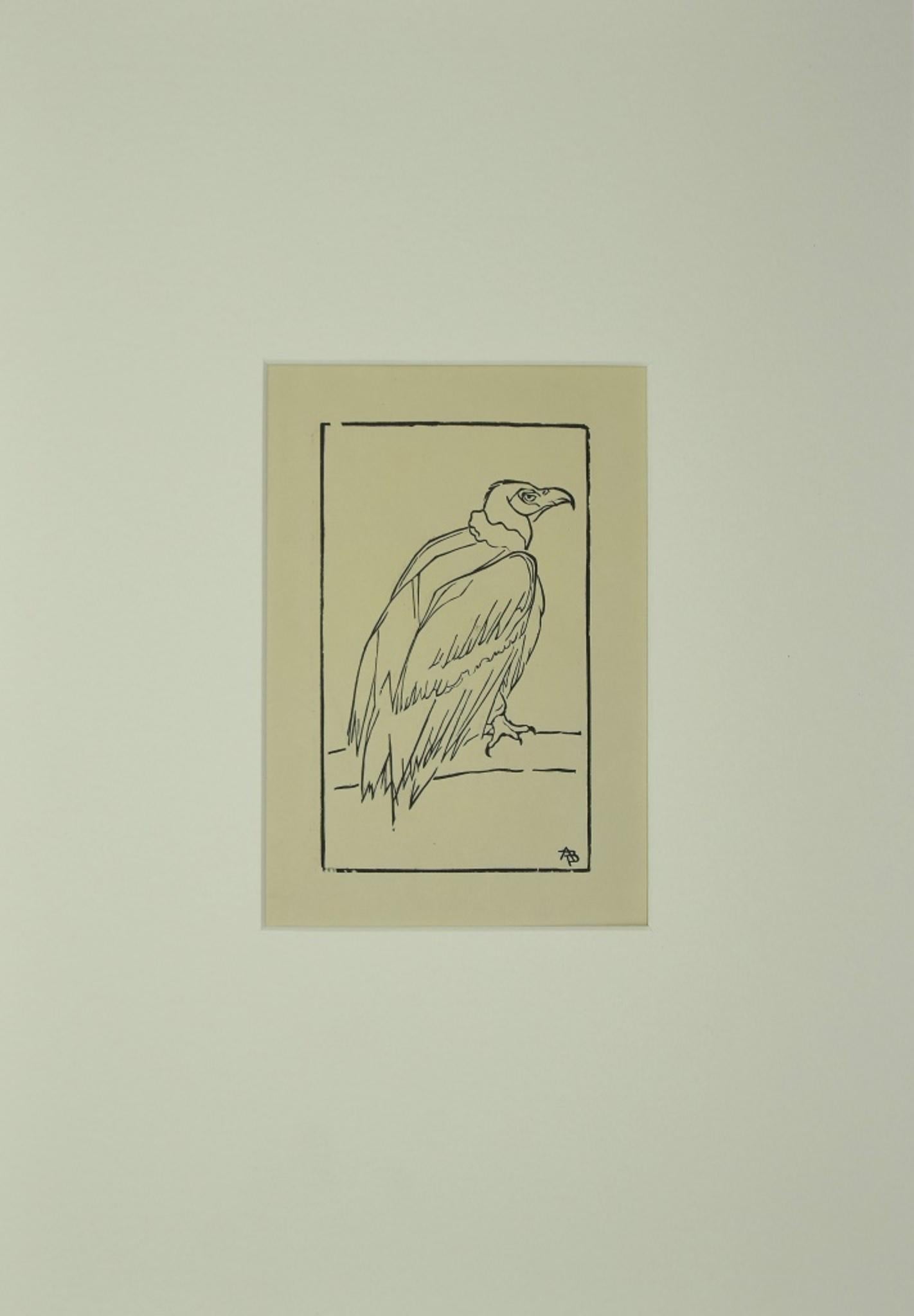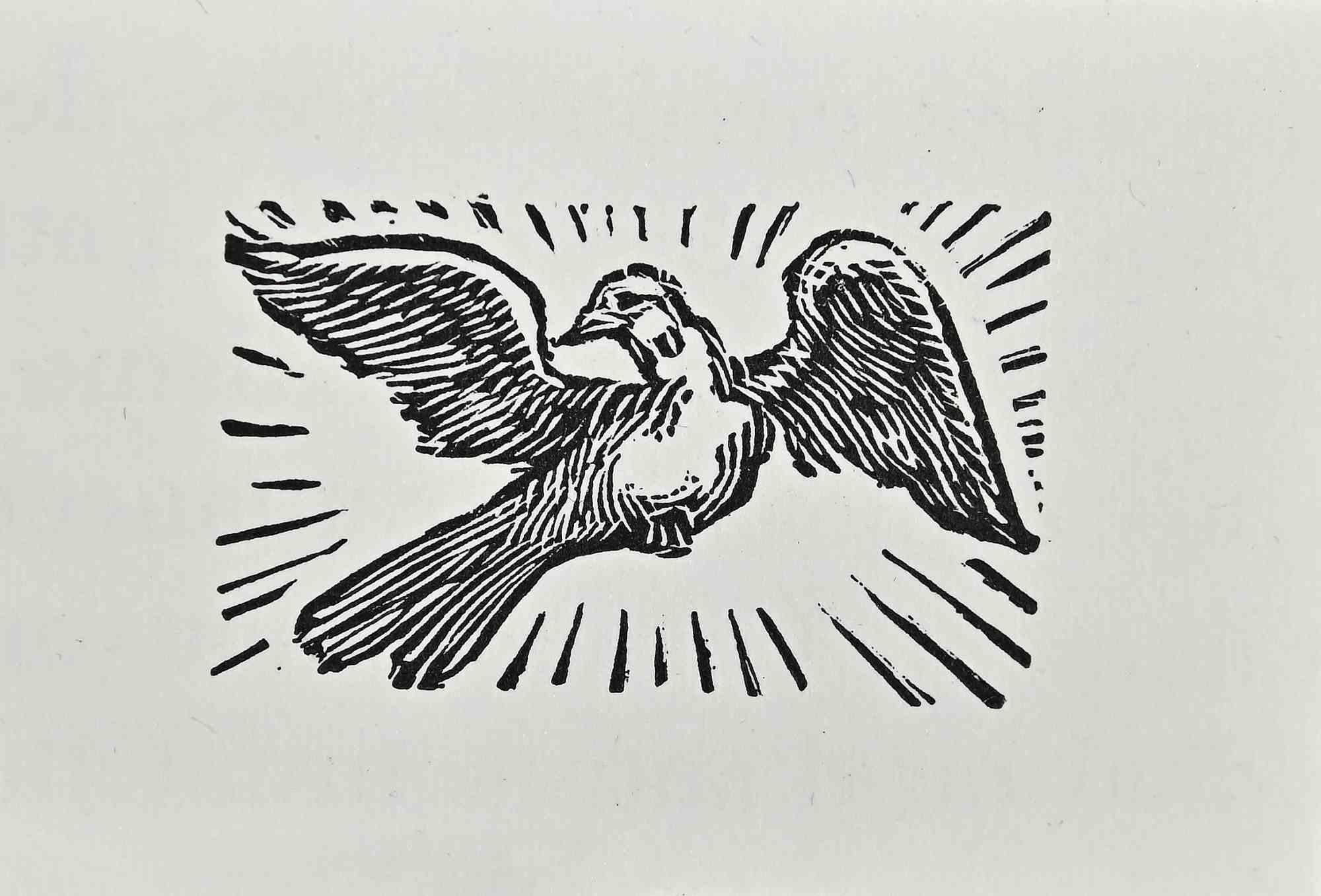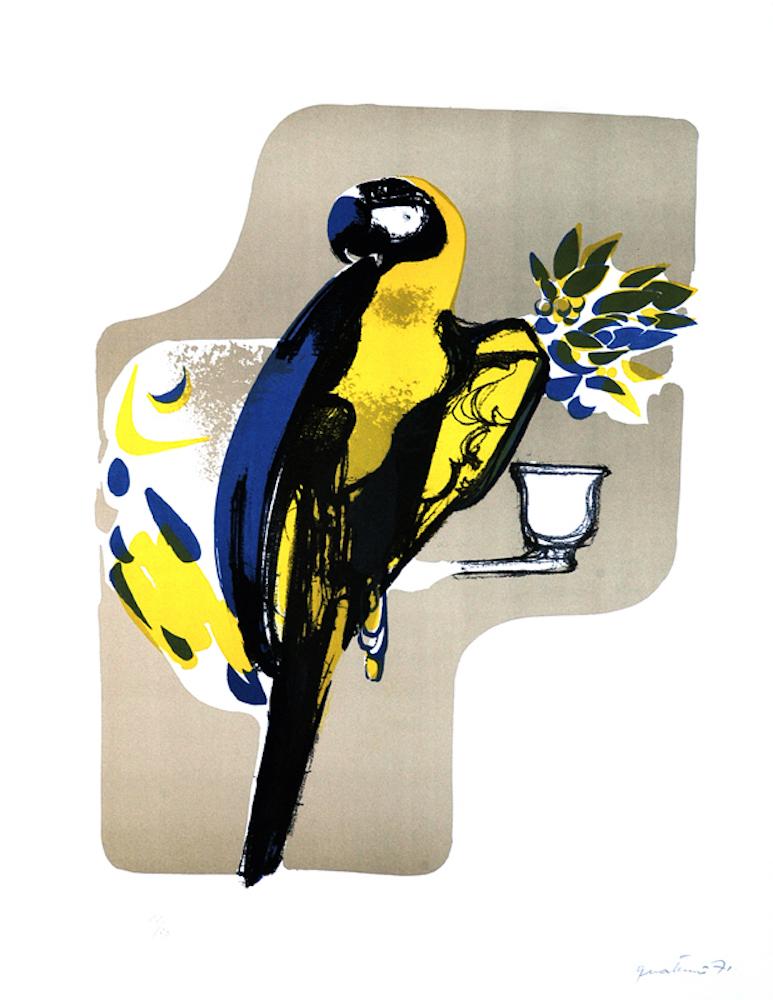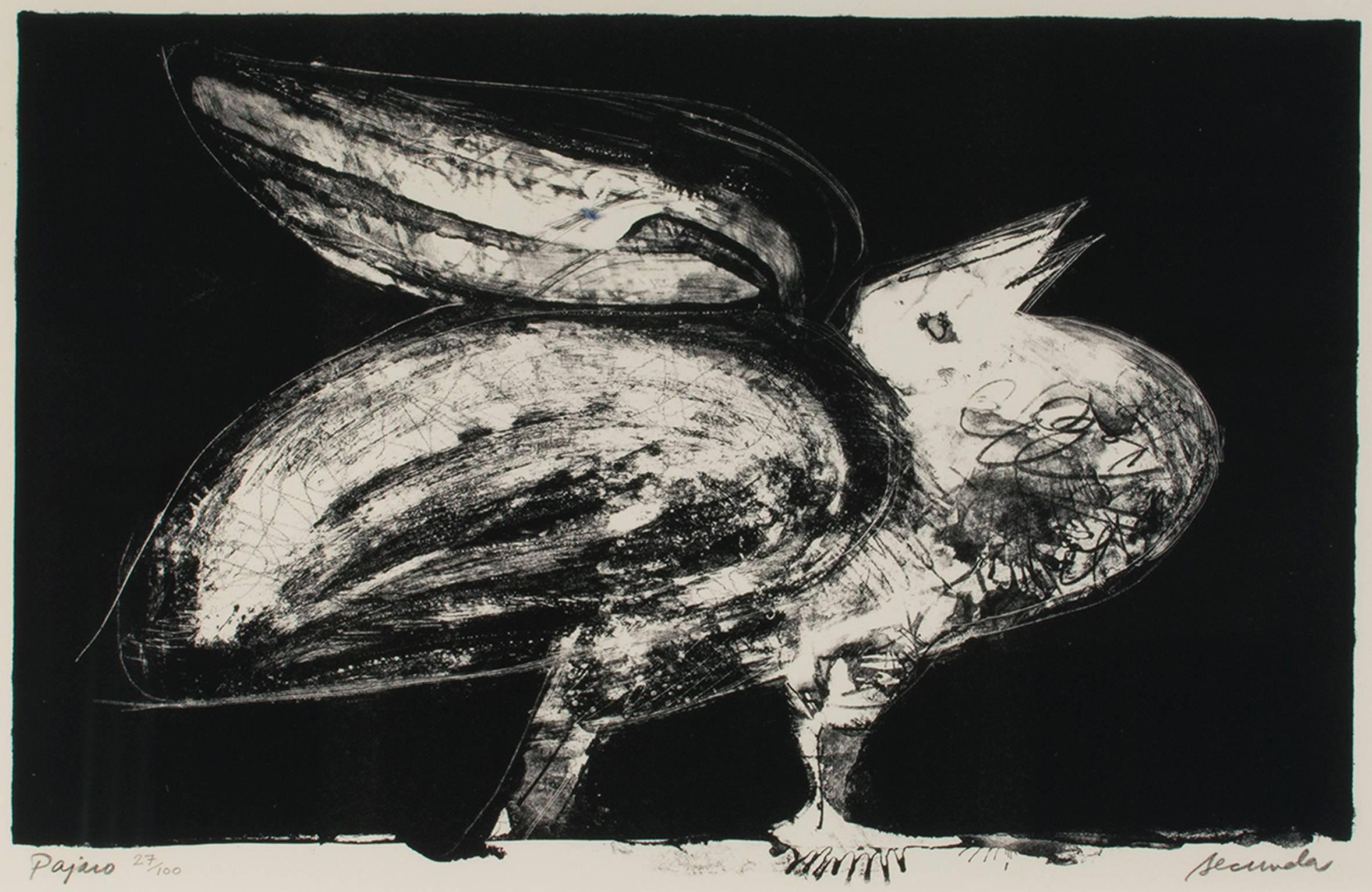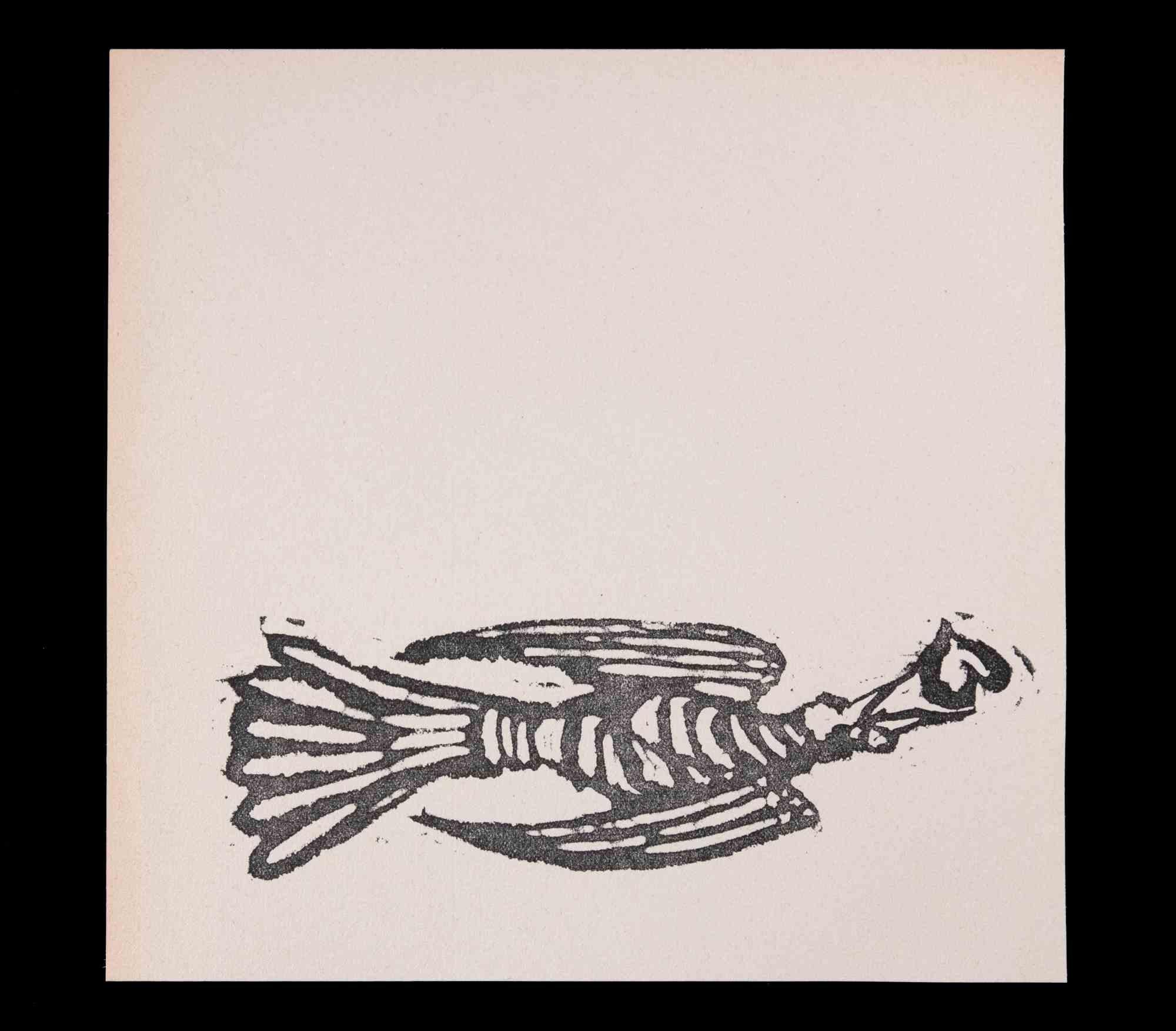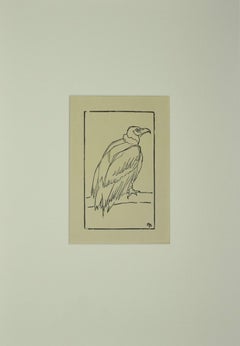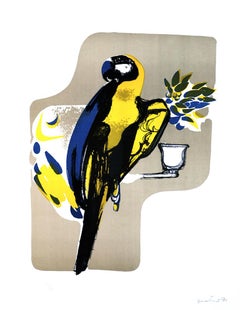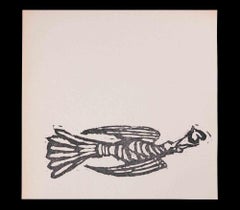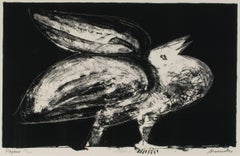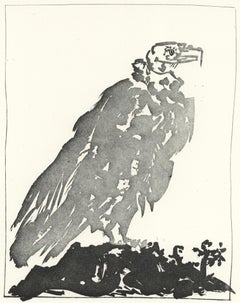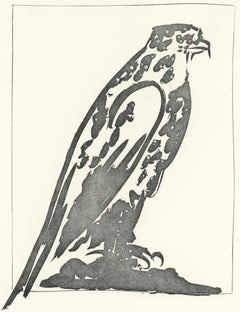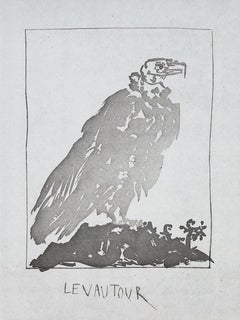Items Similar to The Parrot - Original Woodcut by Unknown French Artist
Want more images or videos?
Request additional images or videos from the seller
1 of 6
UnknownThe Parrot - Original Woodcut by Unknown French ArtistEarly 1900
Early 1900
$160.35
$213.8025% Off
£119.53
£159.3725% Off
€135
€18025% Off
CA$223.51
CA$298.0125% Off
A$242.91
A$323.8825% Off
CHF 128.37
CHF 171.1625% Off
MX$2,938.71
MX$3,918.2825% Off
NOK 1,598.75
NOK 2,131.6725% Off
SEK 1,510.12
SEK 2,013.4925% Off
DKK 1,028.09
DKK 1,370.7825% Off
About the Item
The Parrot is an original xilograph on paper realized by an anonymous artist in the XX century.
Including a white cardboard passepartout: 69 x 49 cm. Monogram of the artist (AP) on the left of the sheet.
Good conditions, except for a tear on the lower right corner.
This modern art print represents a black and white parrot in profile grabbed onto a net.
This antique print of a parrot can transform any home into a beautiful work of art.
- Creation Year:Early 1900
- Dimensions:Height: 23.43 in (59.5 cm)Width: 17.92 in (45.5 cm)Depth: 0.04 in (1 mm)
- Medium:
- Movement & Style:
- Period:
- Condition:Insurance may be requested by customers as additional service, contact us for more information.
- Gallery Location:Roma, IT
- Reference Number:Seller: M-1015841stDibs: LU65034441311
About the Seller
4.9
Platinum Seller
Premium sellers with a 4.7+ rating and 24-hour response times
1stDibs seller since 2017
7,743 sales on 1stDibs
Typical response time: 2 hours
- ShippingRetrieving quote...Shipping from: Monaco, Monaco
- Return Policy
Authenticity Guarantee
In the unlikely event there’s an issue with an item’s authenticity, contact us within 1 year for a full refund. DetailsMoney-Back Guarantee
If your item is not as described, is damaged in transit, or does not arrive, contact us within 7 days for a full refund. Details24-Hour Cancellation
You have a 24-hour grace period in which to reconsider your purchase, with no questions asked.Vetted Professional Sellers
Our world-class sellers must adhere to strict standards for service and quality, maintaining the integrity of our listings.Price-Match Guarantee
If you find that a seller listed the same item for a lower price elsewhere, we’ll match it.Trusted Global Delivery
Our best-in-class carrier network provides specialized shipping options worldwide, including custom delivery.More From This Seller
View AllBird - Original Woodcut - Early 20th Century
Located in Roma, IT
Bird is an original woodcut realized by an artist of the early 20th Century.
The artwork is in very good conditions and mounted on a white cardboard passpartout (49x34).
Artist’s i...
Category
Early 20th Century Animal Prints
Materials
Paper, Woodcut
The Bird - Woodcut print - early 20th century
Located in Roma, IT
The bird is a woodcut print realized by an unknown artist in the early 20th Century.
Very Good conditions.
the artwork is depicted through confident strokes.
Category
Early 20th Century Modern Figurative Prints
Materials
Woodcut
Parrot - Lithograph by Carlo Quattrucci - 1971
By Carlo Quattrucci
Located in Roma, IT
Limited edition of 70 prints, numbered and hand signed.
Very good conditions.
Category
1970s Contemporary Figurative Prints
Materials
Lithograph
Bird of Love - Linocut by Mino Maccari - 1951
By Mino Maccari
Located in Roma, IT
Bird of Love is an original Linocut Print realized by Mino Maccari in 1951.
Very Good condition.
No Signature.
Mino Maccari (1898-1989) was an Italian writer, painter, engraver an...
Category
1950s Modern Figurative Prints
Materials
Linocut
Oiseau Bleu - Woodcut Print by G. Halff - Late 1900
By Giselle Halff
Located in Roma, IT
Oiseau Bleu is a beautiful original colored xylograph on wove paper, realized by the French artist Giselle Halff between the half and the end of XX century...
Category
Late 20th Century Contemporary Animal Prints
Materials
Woodcut
Bird - Original Etching by Leo Guida - 1970
By Leo Guida
Located in Roma, IT
Bird is an original etching realized by Leo Guida in 1970.
Good condition.
Mounted on a white cardboard passpartout (50x35).
Dated and signed by the author.
Artist proof.
Leo Gu...
Category
1970s Contemporary Animal Prints
Materials
Etching
You May Also Like
"Pajaro (Parrot), " Black and White Lithograph signed by Arthur Secunda
By Arthur Secunda
Located in Milwaukee, WI
"Pajaro" is an original black and white lithograph by Arturo A. Secunda. It depicts a parrot. The artist signed the piece in the lower right and wrote the title and the edition number (27/100) in the lower left.
11 1/2" x 17 1/2" art
22 3/4" x 28 1/2" frame
Arthur Secunda is an internationally renowned artist whose career has spanned five decades. His one man shows have been seen worldwide in numerous galleries and museums in France, Sweden, Belgium, Holland, Spain, Israel, and Japan. In the United States, he is represented in most major museums of the country, including the National Gallery of Art and the Smithsonian Museum in Washington D.C., the Museum of Modern Art in New York, the UCLA Museum, the Detroit Art Institute, and the Phoenix Museum. Known for his brilliant collages and striking graphics, Secunda has mastered all types of printmaking, even making his own paper in France and Japan. His impressive body of work includes painting, mixed media, polyester assemblage, ceramics and welded sculpture. His studies began at the Detroit Art Institute as a teenager, and continued in New York at the Art Students League and New York University. After a stint in the Air Force as an artist, he then studied, thanks to the GI bill, in Mexico, Paris and Italy, with many great artists and teachers, beginning a lifelong propensity for travel-- living and working in other countries. For decades, he maintained studios in Paris and LA.
He considers himself a landscape artist, and has developed his own iconography in representing nature, the land and its forms, as well as corresponding inner landscapes. He is known for a specific kind of color gradation and blending of forms in many media. His work tends to oscillate between the serene--striated colors in landscapes--to the expressive, as in many of his oil paintings.
After years in Paris, Secunda has maintained a studio in Scottsdale for the last decade--doing what he has done in all of the other places he has liv ed and worked in the last 50 years--creating imagery.
He has worked as a jazz musician--in Paris in the early days to support himself, and as a milkman; as an art critic, lecturer, curator, writer and publisher. Periodically, he consults at NASA where he is an image visualizer, helping translate scientific data into visual images. Highly respected as a teacher, he will spend August in Lacoste, France teaching a master class in collage and the creation of handmade artists books. (Secunda has an international following of people who subscribe and collect his dada art "books".)
Next year, he will have a one man exhibition at the University of Judaism in Los Angeles, presenting a never before seen series of expressive portrait monotypes of noted art personalities, after which he will exhibit early Mexican woodcuts...
Category
1950s Animal Prints
Materials
Lithograph
Picasso, Le Vautour (The Vulture) (Orozco p.82), Histoire naturelle (after)
By Pablo Picasso
Located in Southampton, NY
Lithograph on papier bouffant des Papeteries de Casteljoux paper. Unsigned and unnumbered, as issued. Paper Size: 12.99 x 9.84 inches. Catalogue raisonné reference: Orozco, Miguel. T...
Category
1970s Cubist Figurative Prints
Materials
Lithograph
$716 Sale Price
20% Off
Free Shipping
Picasso, L'Épervier (The Hawk) (Orozco p.82), Histoire naturelle (after)
By Pablo Picasso
Located in Southampton, NY
Lithograph on papier bouffant des Papeteries de Casteljoux paper. Unsigned and unnumbered, as issued. Paper Size: 12.99 x 9.84 inches. Catalogue raisonné reference: Orozco, Miguel. T...
Category
1970s Cubist Animal Prints
Materials
Lithograph
$716 Sale Price
34% Off
Free Shipping
The Vulture. 1942 (Histoire Naturelle - Textes de Buffon, B.341)
By Pablo Picasso
Located in Greenwich, CT
The Vulture is an aquatint and drypoint print on chine from one of the deluxe copies of Picasso's 1942 Histoire Naturelle - Textes de Buffon series. The image size is 10.6 x 8 inches, unsigned as issued, and framed in a contemporary silver and gray moulding. One of about 36 prints that exist with Picasso's remarqued title in French, from the edition of 262 (there were 226 portfolios, some with additional sets on varying papers).
Catalogue - Cramer #37
The exceptional etchings from Picasso’s Histoire Naturelle – Textes de Buffon are a masterful combination of sugar-lift aquatint and drypoint, showcasing a full range of gray tonalities. The etchings of animals, birds and insects are considered some of the most beautiful and most unusual examples of Picasso’s graphic work.
Roger Lacourière, Picasso’s master printer, pulled the prints for each etching between 1939-1942. It was Lacourière who taught Picasso the sugar-lift aquatint technique which allowed him to mimic the effect of brushstrokes in these etched images. Picasso first explored the technique in his plates for the Vollard Suite, but it was in the creation of the Buffon images that he fully realized its stunning, painterly potential.
For the edition, 226 portfolios were produced with the first thirty-six counting as deluxe compilations. These rare deluxe sets were on diverse papers (chine, japon or vergé ancien) and each included a complete additional suite showing Picasso’s title remarques along the bottom. As such, the remarqued versions of the prints are quite rare with just thirty-six of each produced for the edition (with the exception of The Wolf which is never remarqued – the image always fills the entire etching plate).
These prints are based on the writings of French naturalist Georges-Louis Leclerc, Comte de Buffon, who extensively documented the natural world in his monumental work Histoire Naturelle. Picasso’s association with the project to illustrate parts of the Buffon came during a tumultuous time in European history – the prelude to, and early years of, World War II. As the continent was ravaged, Picasso lived through the disaster in Paris, which the Germans occupied in 1940. These prints could be seen as a political statement – Picasso channeling his artistic expression into a form of resistance art...
Category
20th Century Modern Prints and Multiples
Materials
Drypoint, Aquatint
Paul Jouve - Eagle - Original Engraving
By Paul Jouve
Located in Collonge Bellerive, Geneve, CH
Paul Jouve - Eagle - Original Engraving
Editions Rombaldi, Paris, 1950.
Copy on velin creme de Rives
Artwork by Paul Jouve.
Original copper engraving heightened with pochoir.
Paul...
Category
1950s Modern Animal Prints
Materials
Engraving
The Sparrow Hawk, 1942 (Histoire Naturelle - Textes de Buffon, B.342)
By Pablo Picasso
Located in Greenwich, CT
The Sparrow Hawk is an aquatint and drypoint print on chine from one of the deluxe copies of Picasso's 1942 Histoire Naturelle - Textes de Buffon series. The image size is 10.5 x 8 inches, unsigned as issued, and framed in a contemporary silver and gray moulding. One of about 36 prints that exist with Picasso's remarqued title in French, from the edition of 262 (there were 226 portfolios, some with additional sets on varying papers).
Catalogue - Cramer #37
The exceptional etchings from Picasso’s Histoire Naturelle – Textes de Buffon are a masterful combination of sugar-lift aquatint and drypoint, showcasing a full range of gray tonalities. The etchings of animals, birds and insects are considered some of the most beautiful and most unusual examples of Picasso’s graphic work.
Roger Lacourière, Picasso’s master printer, pulled the prints for each etching between 1939-1942. It was Lacourière who taught Picasso the sugar-lift aquatint technique which allowed him to mimic the effect of brushstrokes in these etched images. Picasso first explored the technique in his plates for the Vollard Suite, but it was in the creation of the Buffon images that he fully realized its stunning, painterly potential.
For the edition, 226 portfolios were produced with the first thirty-six counting as deluxe compilations. These rare deluxe sets were on diverse papers (chine, japon or vergé ancien) and each included a complete additional suite showing Picasso’s title remarques along the bottom. As such, the remarqued versions of the prints are quite rare with just thirty-six of each produced for the edition (with the exception of The Wolf which is never remarqued – the image always fills the entire etching plate).
These prints are based on the writings of French naturalist Georges-Louis Leclerc, Comte de Buffon, who extensively documented the natural world in his monumental work Histoire Naturelle. Picasso’s association with the project to illustrate parts of the Buffon came during a tumultuous time in European history – the prelude to, and early years of, World War II. As the continent was ravaged, Picasso lived through the disaster in Paris, which the Germans occupied in 1940. These prints could be seen as a political statement – Picasso channeling his artistic expression into a form of resistance art...
Category
20th Century Modern Prints and Multiples
Materials
Drypoint, Aquatint
